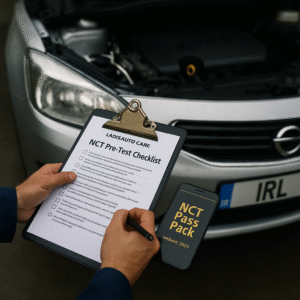Learn why your “check engine” light comes on and how to diagnose the issue. Discover common causes, troubleshooting steps, and tips to keep your vehicle running smoothly.
What You Will Learn:
- Common reasons for the “check engine” light
- Steps to diagnose the problem
- Importance of addressing the issue promptly
- How to use professional diagnostic services
Common Reasons for the “Check Engine” Light
The “check engine” light can come on for various reasons, including:
- Loose or Faulty Gas Cap:
- A loose, damaged, or missing gas cap can trigger the light. Check and tighten the cap to see if the light turns off.
- Oxygen Sensor Failure:
- The oxygen sensor monitors the amount of unburned oxygen in the exhaust. If it fails, it can lead to poor fuel economy and increased emissions.
- Catalytic Converter Issues:
- A failing catalytic converter can cause the light to come on and affect your car’s performance and emissions.
- Faulty Spark Plugs or Wires:
- Bad spark plugs or wires can cause misfires, reducing engine performance and triggering the light.
- Mass Air Flow Sensor Problems:
- This sensor measures the amount of air entering the engine. A faulty sensor can affect fuel efficiency and performance.
For detailed diagnostics and professional advice, consider using Auto Query.
How to Diagnose the Problem
- Check for Obvious Issues:
- Inspect the gas cap and make sure it’s tightened properly.
- Use an OBD-II Scanner:
- An OBD-II scanner can read the trouble codes from your car’s computer, helping you identify the issue. You can purchase a scanner or visit a mechanic.
- Consult Your Vehicle’s Manual:
- Your manual may provide information on common issues and troubleshooting steps.
- Seek Professional Help:
- If you’re unable to diagnose the problem, consult a professional using Auto Query Pro for comprehensive diagnostics.
Importance of Addressing the Issue Promptly
Ignoring the “check engine” light can lead to more severe problems and costly repairs. Addressing the issue promptly can:
- Prevent Further Damage:
- Early diagnosis and repair can prevent minor issues from becoming major problems.
- Improve Fuel Efficiency:
- Fixing issues like faulty oxygen sensors and mass air flow sensors can improve fuel economy.
- Reduce Emissions:
- Maintaining your vehicle properly helps reduce harmful emissions and pollution.
- Ensure Safety:
- Ensuring all engine components are working correctly can prevent breakdowns and enhance your vehicle’s reliability.
How to Use Professional Diagnostic Services
Professional diagnostic services can provide a detailed analysis of your vehicle’s issues. Here’s how to get started:
- Schedule an Appointment:
- Book a diagnostic appointment with a reputable service like Auto Query.
- Prepare Your Vehicle:
- Make sure your vehicle is in a condition to be inspected. Gather any relevant service records.
- Discuss the Findings:
- Review the diagnostic report with the technician and ask questions to understand the necessary repairs.
By understanding these common reasons and taking appropriate steps to diagnose and fix the issue, you can keep your car running smoothly and efficiently. For more detailed diagnostics and professional assistance, visit Auto Query and Auto Query Pro.





